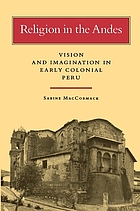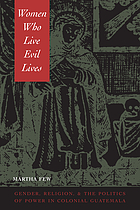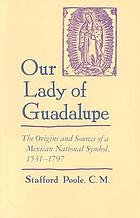
By the mid-sixteenth century,Spanish colonial rule in America had been formalized with the creation of viceroyalties in New Spain (1535) and Peru (1542). Clergy proved to be important intermediaries in bringing Amerindians into the Spanish polity. As they sought to better understand their new subjects, missionaries spent many years studying the history and belief systems of the Native peoples. The work of Bernardino de Sahagún for New Spain (Florentine Codex), and José de Acosta (Natural and Moral History of the Indies) and Bernabé Cobo (Inca Religion and Customs) for Peru, are invaluable early sources of local history. Before the Council of Trent, missionaries in Spanish America believed they could incorporate Indigenous religious practices into the Christian faith. After the Council defined more precise parameters of orthodox Christianity in response to the Protestant heresies, Native converts were expected to conform more closely to European standards and practices. This generated a period of violence as Spanish clergy attempted to destroy the symbols of old beliefs. Sabine MacCormack’s Religion in the Andes: Vision and Imagination in Early Colonial Peru provides a superb view of changes in the viceroyalty of Peru during the sixteenth century. Using material from European sources as well as from local trials conducted against idolaters, she evinces transformations and continuities of local religious practices in the aftermath of the conquest. Many Indigenous customs, such as seeking counsel from the dead, were perceived by Spaniards as devil worship. Andean religious leaders thus became, in the language of their new overlords, witches and sorcerers. While local communities adopted these Spanish terms, they did not impute to them the same negative meaning. As Spaniards lashed out against idolaters, the harshness of Christian rule softened the memory of the time when the Inca held power.
Kenneth Mills addresses the longer-term consequences of the campaigns to make Peru Christian on the European model in Idolatry and Its Enemies: Colonial Andean Religion and Extirpation, 1640–1750. In a richly complex portrayal of Andean society, Mills demonstrates that Christian response to Indigenous “backsliding” was not necessarily uniform, and that many Andean Christians continued to participate in earlier religious practices now transformed by the presence, and repressive methods, of Europeans. Over the course of centuries of colonial rule, moreover, the Christian Church became a source of “sacred power” in the Andes as mendicant friars and Jesuits mitigated the harshness of the campaigns to extirpate idolatry while seeking to make Christianity understandable and applicable to Indians. Over time, local societies developed in ways that were neither fully Indian nor fully Christian. Mills cautions against binary explanations that fail to see accommodation on both sides.
One of the most fascinating documents to emerge from the extirpation campaigns in the Andes was the lengthy (1,200-page) illustrated letter that Felipe Guaman Poma de Ayala wrote to the king of Spain in the early seventeenth century. Long buried in a Danish archive, the manuscript came to light in the early twentieth century and has now been digitized and made available to the public (www.kb.dk/permalink/2006/poma/info/en/frontpage.htm). Sections of the work have been translated into English and published as The First New Chronicle and Good Government (abridged). Guaman Poma translated for Spanish officials traveling through the viceroyalty early in the extirpation campaign. The letter to Philip III provides his version of Andean history and of the abuses inflicted on the Indians by both churchmen and lay government officials. While his plea for reform was not acted on (the king likely never saw the letter), this document opens a window into the world of “go-betweens” who participated in both Spanish and Native cultures.
Guaman Poma made a point to distinguish between the actions of the secular clergy and those of the members of various religious orders; his letter highlights the avarice and abuse of many priests and bishops, contrasting them to the friars and missionaries who showed compassion and love toward Indians. He particularly praised the work of members of the Society of Jesus, a new religious order formed in 1540. Sabine Hyland has provided a biography of one of these men in The Jesuit and the Incas: The Extraordinary Life of Padre Blas Valera S.J. She has also translated Valera’s work on Native religion in Gods of the Andes: An Early Jesuit Account of Inca Religion and Andean Christianity.
In the late fifteenth century, shortly before the voyages of Christopher Columbus, the Catholic monarchs Ferdinand of Aragon and Isabella of Castille established the Spanish Inquisition in order to ensure religious orthodoxy in the kingdoms that would become Spain. The Inquisition became an integral part of Spanish colonial rule in America, with offices in Mexico City and in Lima, Peru. Although after 1570 it no longer held jurisdiction over Indians, the Inquisition continued to ferret out heresy from the population of European and African descent. While not direct targets of inquisitors, Native Americans were frequently called as witnesses in Inquisition trials, and their voices thus emerge from those documents as well. Inquisition records have been mined over the past few decades, providing insight into the religious practices of ordinary people and their interactions with church and state authorities. A number of these records have been translated and made available for classroom use in The Inquisition in New Spain, 1536–1820: A Documentary History, edited by John F. Chuchiak IV. Another useful collection, Colonial Lives: Documents on Latin American History, 1550–1880, edited by Richard Boyer and Geoffrey Spurling, includes some of these primary documents in translation. Editor Mary E. Giles shifts the focus to gender in Women in the Inquisition: Spain and the New World.
Laura A. Lewis’s Hall of Mirrors: Power, Witchcraft, and Caste in Colonial Mexico uses Inquisition records to address ways in which people of color asserted a level of control in colonial society by playing on the fears of Spaniards that Indians had special powers to cast ruinous spells on their oppressors. Mixed-race individuals (the castas) served as go-betweens, seeking remedies for the white elite from Indians who could counter evil spells, thus gaining some control and prestige for themselves. Over the course of three centuries of colonial rule, Lewis argues, society became increasingly racialized, with blacks and mulattoes seen as more likely to deploy Indian witchcraft against whites, thus privileging the place of the supposedly less-sinister mestizos over those of African descent.
Women’s voices have emerged from new archival research, including records of the Inquisition, providing new perspectives on ways in which they responded to male authority and power. In the Andes, before the arrival of Europeans, women had actively participated in religious leadership roles. Irene Silverblatt’s Moon, Sun, and Witches: Gender Ideologies and Class in Inca and Colonial Peru examines the transformation of gender roles in the region as first Inca expansion and then the Spanish conquest broke down a longstanding tradition of gender parallelism. According to Silverblatt, both the military thrust of Inca conquest that privileged male warriors and the patriarchal class society brought by Europeans, which undercut local communitarian practices, undermined women’s influence. Women who continued the more traditional practices in the less-populated highlands (the punas) were labeled witches by the Spaniards.
Martha Few’s Women Who Live Evil Lives: Gender, Religion, and the Politics of Power in Colonial Guatemala shifts the gaze to women in one of the outposts of New Spain. Using Inquisition records, Few demonstrates that marginalized women of color gained power by using Indigenous healing traditions and spiritual practices that Spaniards considered evil. Working at the communal level and providing succor to the ill, women and people of color challenged the colonial order.
In the pervasive struggle of Native peoples to maintain some autonomy within the colonial system, even the symbols brought by Christian clergy not infrequently became rallying points for local rebellions. Kevin Gosner’s Soldiers of the Virgin: The Moral Economy of a Colonial Maya Rebellion explores the tension between the promise of social justice embodied in the Virgin Mary and the reality of abuse by competing Indigenous groups as well as European overlords in Chiapas, Mexico. Ultimately, he shows that one cannot fully understand Indigenous rebellion without addressing the ways in which religious symbols, practices, and traditions native to the region added to those brought by the Spaniards and were used to shape local culture and expectations for social justice.
The conquests in Mexico and Peru, followed by spectacular silver strikes, brought both European immigrants and great wealth to the new Spanish viceroyalties. Convents emerged in Spanish America by the mid-sixteenth century, reflecting and also helping to shape this colonial society. Many nuns in Spanish America came from elite families and brought their servants to the convents. Thus, records related to nunneries help historians uncover the often hidden race and power relations among colonial women. Nancy van Deusen, in The Souls of Purgatory: The Spiritual Diary of a Seventeenth-Century Afro-Peruvian Mystic, Úrsula de Jesus, explores this dynamic. A slave of African descent, Úrsula’s ecstatic religious experiences earned respect from the nuns in the convent where she served. She claimed to be transported to purgatory, where she learned that many religious were suffering in the afterlife because of the callous ways they had treated their servants of color. For some women, then, convents and Christian beliefs provided the opportunity to protest an unjust social system in ways that might prove more effective than violent rebellion. Indigenous Writings from the Convent: Negotiating Ethnic Autonomy in Colonial Mexico, by Mónica Díaz, addresses the experiences of the women who joined convents created in the eighteenth century for daughters of the Indian nobility. Using material written by these nuns as well as sermons preached to them by men of European descent, the author considers ways in which individuals who were doubly marginalized (Indians in a colonial society and women in a patriarchal society) created spaces of ethnic and gender pride.
Kathryn Burns explores the significance of convents for the daughters of the wealthy elite. Her Colonial Habits: Convents and the Spiritual Economy of Cuzco, Peru, demonstrates that, far from islands of female contemplation, the convents provided opportunities for women to become active in worldy affairs, replicating in many ways the society outside their walls. Tightly connected to the fluctuations of the colonial economy, they reached their zenith in the seventeenth century, then suffered decline in the eighteenth century. Burns provides important insight into how Spanish and then Creole women (those of European descent born in America) navigated these changing times in Peru.
Asunción Lavrín, a pioneering historian of women in Latin America, takes a different perspective in Brides of Christ: Conventual Life in Colonial Mexico. Her research shows that in New Spain, women entered convents primarily because they wished to become “brides of Christ.” While nunneries did provide space for earthly pursuits, Lavrín keeps her focus on the centrality of the spiritual, and she finds that Indigenous women in the convents overwhelmingly shared the same spiritual goals as did women of European descent.
The ambiguities and contradictions experienced by women living in convents become evident in the life of Latin America’s most well known nun, Sor (Sister) Juana Inés de la Cruz, who lived in New Spain during the seventeenth century. Often described as the first “feminist” in the Americas, Sor Juana refused to marry and instead chose life in a convent where she read, wrote, and engaged in discussions with the male intellectuals of her time. Her prolific prose and poetry became an important component of Mexico’s literary canon. But when she challenged the theology of Father António Vieira, the most respected and well-connected Jesuit of his time, she incurred the wrath of conservative Mexican society. Her male confessor insisted she recant and turn to a life more fitting for a woman, devoting herself to introspection and mortification of the flesh. A Woman of Genius: The Intellectual Autobiography of Sor Juana Inés de la Cruz provides a compilation of some of her work translated into English. The nuanced biography by Octavio Paz, Sor Juana: or, the Traps of Faith, contributes insight into both the woman and her era.
In New Spain, as in most of Latin America, religious life played out in the shadow of intense veneration of the Virgin Mary, the Mother of God. Brought to the New World on the first European ships, Mary was embraced by men and women of all races, ethnicities, and social classes. As in Europe, particular representations of the Holy Virgin became associated with specific locations. The best known of these is Our Lady of Guadalupe, who, according to legend, appeared to a Nahua Indian in 1531 on the Hill of Tepeyac just outside Mexico City. D. A. Brading’s Mexican Phoenix: Our Lady of Guadalupe: Image and Tradition across Five Centuries provides a thorough discussion of the significance of Guadalupe at different times in Mexico’s history. Stafford Poole convincingly debunks the long-held view that the story of Guadalupe originated among the Indigenous population in the sixteenth century. Instead, in Our Lady of Guadalupe: The Origins and Sources of a Mexican National Symbol, 1531-1797, he carefully documents how Creoles championed Guadalupe as a symbol of New Spain’s special place in God’s redemptive plan. As dissatisfaction with Spanish rule grew in the eighteenth century, the legend of Guadalupe bolstered the separatist aspirations of Creoles and the appeal for good government on the part of oppressed Natives. Jacques Lafaye argues, in Quetzalcóatl and Guadalupe: The Formation of Mexican National Consciousness, 1531–1813, that Creoles in New Spain fused Christian traditions with Aztec mythology in a way that provided a sense of unity and pride for the diverse colonial population, reaching its climax in the Mexican movement for independence from Spain.
 Religion in the Andes : vision and imagination in early colonial Peru
by
Religion in the Andes : vision and imagination in early colonial Peru
by
 Women who live evil lives : gender, religion, and the politics of power in colonial Guatemala, 1650-1750
by
Women who live evil lives : gender, religion, and the politics of power in colonial Guatemala, 1650-1750
by
 The souls of purgatory : the spiritual diary of a seventeenth-century Afro-Peruvian mystic, Ursula de Jesús
by
The souls of purgatory : the spiritual diary of a seventeenth-century Afro-Peruvian mystic, Ursula de Jesús
by
 Our Lady of Guadalupe : the origins and sources of a Mexican national symbol, 1531-1797
by
Our Lady of Guadalupe : the origins and sources of a Mexican national symbol, 1531-1797
by